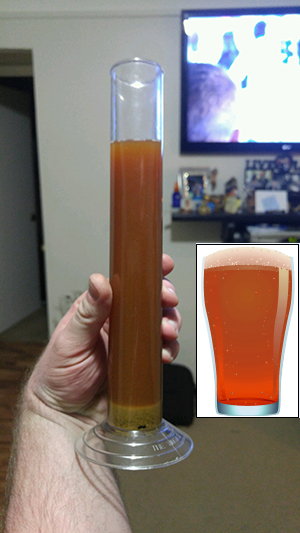jonbenderr
Member
- Joined
- Jan 6, 2016
- Messages
- 15
- Reaction score
- 4
Hi all!
Currently wrapping up my first brew and am planning the next.
I've been looking at the recipe for Brewer's Best Red Ale:
http://www.brewersbestkits.com/pdf/1010%202013%20Red%20Ale%20Recipe.pdf
I know a lot of new brewer's are eager to get creative, myself included, but we sometimes get a little carried away. I wanted to get some advice on some potential additions to this recipe.
I mocked up the base recipe in beersmith and started playing around with things but I know this doesn't mean the end product will be any good.
Additions:
1lb Corn Sugar (As boil starts?)
1 oz. Hallertau Hops (finishing addition?)
4 oz. Special Roast (steeped)
1lb corn sugar to the boil would just be to get a little abv increase.
1 oz. Hallertau is to bring IBUs back in line. I chose Hallertau due to seeing it included in Conway's Irish Ale clones.
4 oz. Special Roast is another selection from the Conway's Clone. I believe this is a steepable malt, correct? Still don't understand the partial mash process just yet, so am sticking to the pure extract process.
I know in the end this won't be anything close to Conway's, but I thought it would be fun to try and snag at least a flavor or two.
I have also read that the corn sugar might not be the best idea as it will dry out the beer. I'm hoping one lb. during the boil isn't too crazy though. I'm sure I may be wrong on that.
What do you guys think?
Currently wrapping up my first brew and am planning the next.
I've been looking at the recipe for Brewer's Best Red Ale:
http://www.brewersbestkits.com/pdf/1010%202013%20Red%20Ale%20Recipe.pdf
I know a lot of new brewer's are eager to get creative, myself included, but we sometimes get a little carried away. I wanted to get some advice on some potential additions to this recipe.
I mocked up the base recipe in beersmith and started playing around with things but I know this doesn't mean the end product will be any good.
Additions:
1lb Corn Sugar (As boil starts?)
1 oz. Hallertau Hops (finishing addition?)
4 oz. Special Roast (steeped)
1lb corn sugar to the boil would just be to get a little abv increase.
1 oz. Hallertau is to bring IBUs back in line. I chose Hallertau due to seeing it included in Conway's Irish Ale clones.
4 oz. Special Roast is another selection from the Conway's Clone. I believe this is a steepable malt, correct? Still don't understand the partial mash process just yet, so am sticking to the pure extract process.
I know in the end this won't be anything close to Conway's, but I thought it would be fun to try and snag at least a flavor or two.
I have also read that the corn sugar might not be the best idea as it will dry out the beer. I'm hoping one lb. during the boil isn't too crazy though. I'm sure I may be wrong on that.
What do you guys think?







![Craft A Brew - Safale S-04 Dry Yeast - Fermentis - English Ale Dry Yeast - For English and American Ales and Hard Apple Ciders - Ingredients for Home Brewing - Beer Making Supplies - [1 Pack]](https://m.media-amazon.com/images/I/41fVGNh6JfL._SL500_.jpg)




















































